If you are looking to grow a tomato that is not only deliciously sweet but also incredibly meaty and beautiful, then Big Rainbow Tomatoes need to be in your garden this year!
The Big Rainbow tomato is a large beefsteak variety that features golden yellow and orange ribbed skin. Once sliced, you are met with bright yellow flesh with bold orangish-red streaks that make it a feast for your eyes – as well as your mouth!
This variety produces massive fruit of up to two pounds on tall 6-foot-plus plants. Big Rainbows are perfect for growing in raised beds or in traditional gardens. Once ripe, the sweet fruit has mild acid levels, making it perfect for slicing on sandwiches, salads and other fresh dishes.
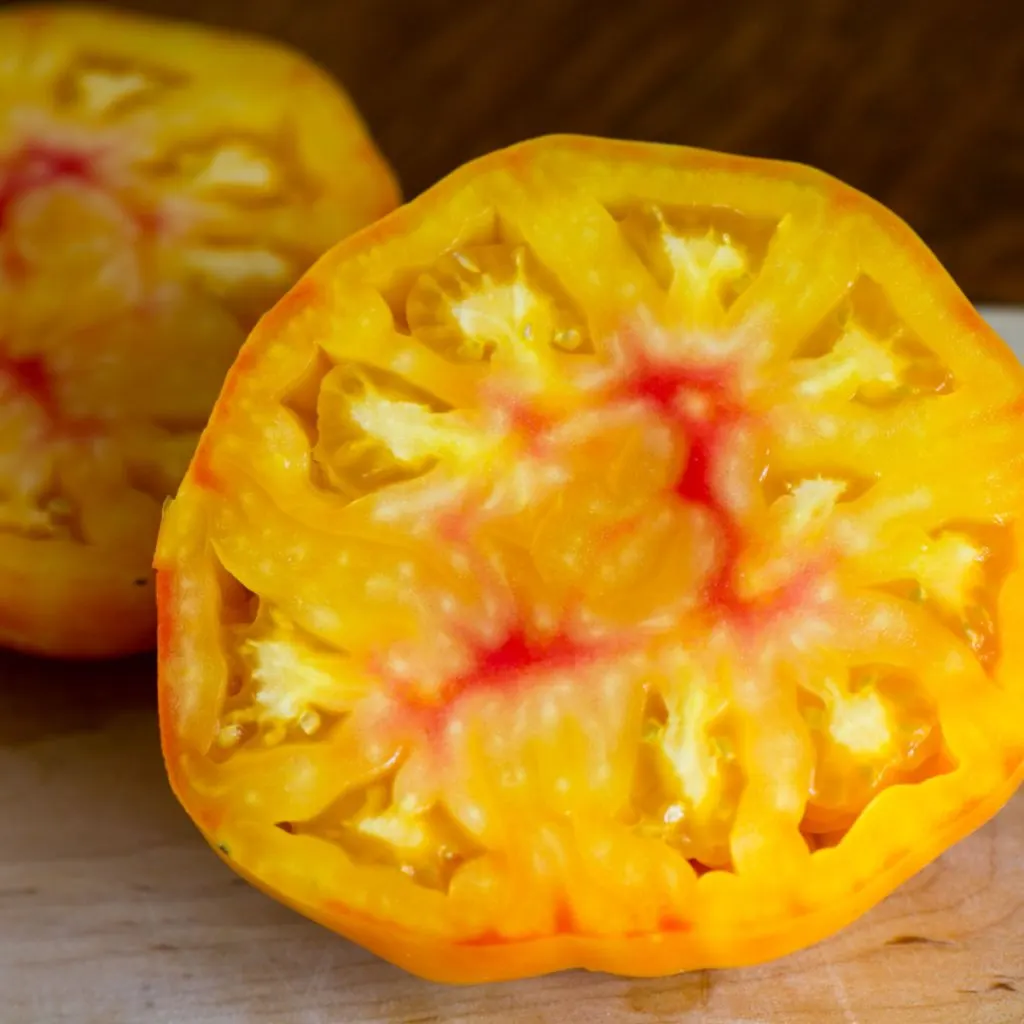
The Origins Of The Big Rainbow Tomato
The Big Rainbow tomato is a family heirloom variety that has been grown for generations in Polk County, Minnesota. A woman by the name of Dorothy Beiswenger eventually introduced it to the Seed Savers Exchange in 1983.
Around 1990, the vibrant tomato was finally introduced into the market and has been grown by home gardeners since. The Big Rainbow is sometimes confused with a similar tomato also with yellow and orange marbling, the Hillbilly. But it is indeed a variety all to its own!
This beautiful beefsteak tomato is loaded with vitamins A, B, and C as well as potassium. And although you can enjoy it fresh, its size and flavor makes it perfect for using in sauces, salsas, or other canned dishes.
Growing Big Rainbow Tomatoes
Growing Seeds And Transplants
While it is growing in popularity, the Big Rainbow tomato is often hard to find as transplants in local garden centers. For this reason, it’s usually best to purchase seeds and start the plants indoors. Affiliate Seed Link: Big Rainbow Heirloom Tomato Seeds
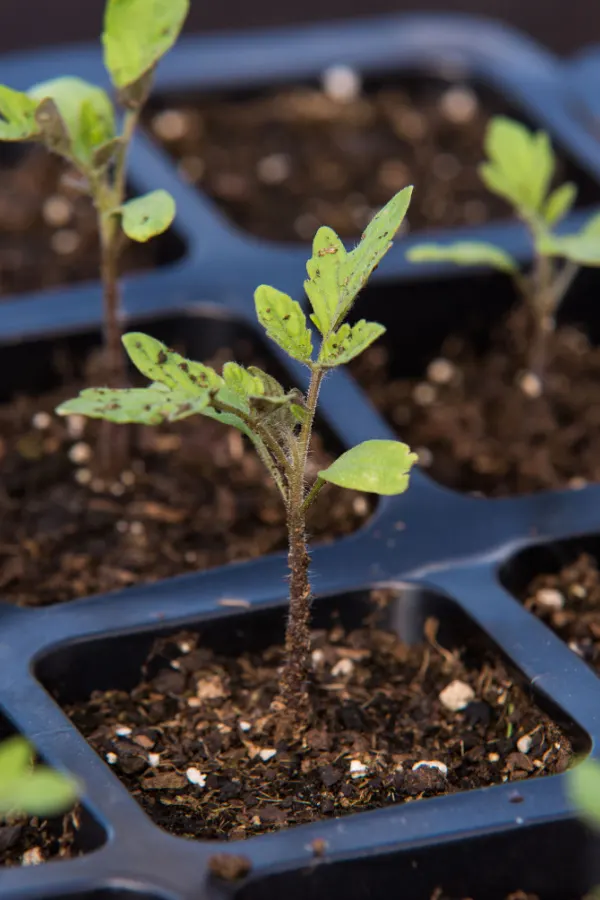
For best results, start Big Rainbow tomato seeds indoors about 8 weeks before your last expected frost date. Big Rainbow tomatoes have a maturity date of around 85 days before you can start harvesting, so plants need a good head start on growing before the weather allows for planting.
Use a moist seed starting soil that is lightweight, well-draining, and has plenty of nutrients. You can purchase seed starting soil commercially in bags or create your own mixture. Affiliate Link: Seed Starter Natural Potting Soil Mix for Germination and Growth
Sowing Seeds
It’s best to use seed starting trays that are a bit larger. This prevents having to re-transplant before final planting day outdoors. Using cells at least 2” x 2” with drainage holes is ideal. Put a few extra seeds in a few of the cells to have extra seedlings in case a few do not germinate.
Lightly cover the seeds with a thin layer of soil. Add some type of humidity dome like a clear plastic lid or a loose piece of plastic wrap. At this point, the seeds do not need light and should germinate in 7 to 14 days.
Once the seeds have started to germinate, place them in a warm location where they can receive about 12 to 14 hours of light each day. Basic LED or fluorescent shop lights work perfectly fine for this.
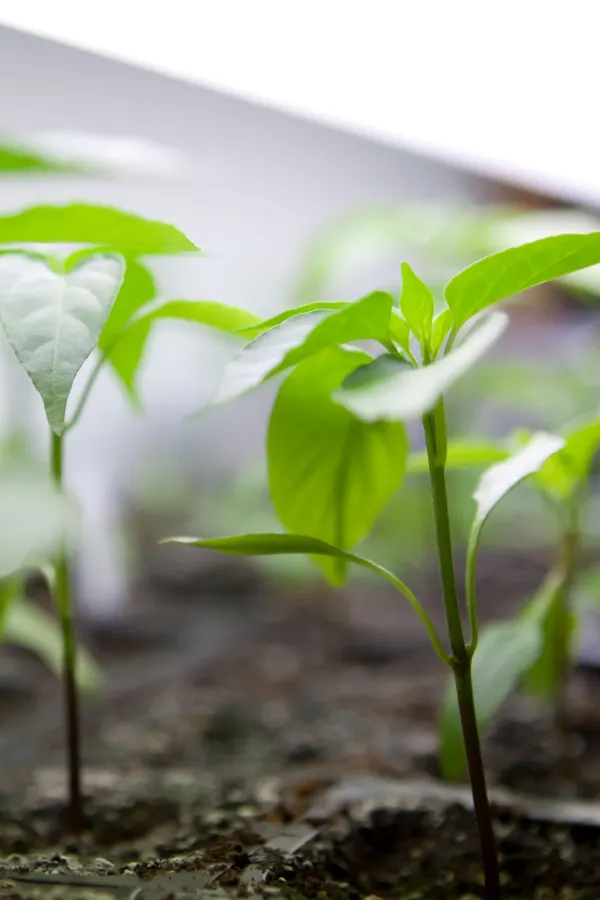
Just ensure that the lights stay about 1 to 2 inches above the top of the plants to keep seedlings growing sturdy and healthy. Once plants are a few inches tall, thin them so there is only one plant per container. You can also transplant extras into any cell that did not germinate at this point.
About two weeks before you plan on planting, start the hardening off process. You can read more about that here: 5 Big Mistakes To Avoid When Starting Tomato Seeds Indoors!
Planting Big Rainbow Tomatoes
While you need to make sure the threat of frost has passed before planting your tomatoes outside, you also want the soil to be warm, too.
Transplants that are placed in warmer soil will adjust quicker and be able to become established sooner than those that are planted in colder soil. In addition, the plants will be able to take in and absorb nutrients much better, resulting in healthier and stronger plants at a much faster pace.
Whether you are using transplants you purchase at a garden center or those you started yourself, wait to plant until the soil measures at least 60 to 65º Fahrenheit. You can use a simple and inexpensive soil thermometer to check the soil’s temperature. Affiliate Link: AcuRite Stainless Steel Soil Thermometer
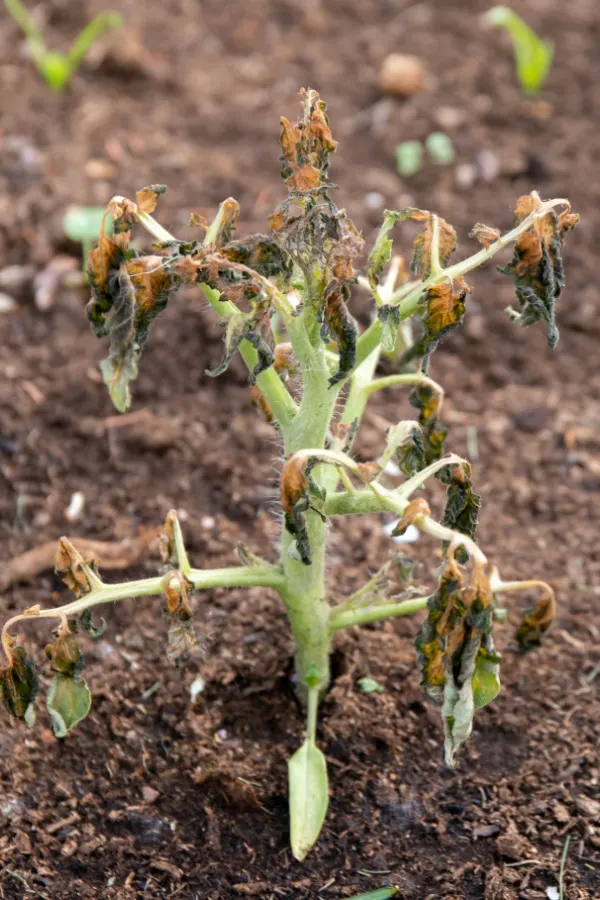
Location Requirements For Growing Big Rainbow Tomatoes
Choose a location that receives full sun for at least 6 to 8 hours daily. The soil needs to be well-draining and packed with nutrients for planting and growing Big Rainbow tomatoes. To help amend dense or depleted soils, mix in plenty of compost at the time of planting.
In addition to compost, add in a few tablespoons of crushed egg shells for added calcium into the planting hole. Add a few tablespoons of spent coffee grounds as well as a quarter cup of worm castings. This combination will get the Big Rainbow tomatoes off to an amazing start at growing strong and healthy.
Don’t forget to add a trellis or some sort of support system for the growing Big Rainbow tomatoes. These plants will get rather large and heavy with all those large slicing tomatoes.
Space additional plants at least 24 to 36 inches apart. Since Big Rainbow tomatoes are indeterminate, they will need plenty of space to continue to grow and produce fruit up until the first frost.

Watering & Fertilizing
Water young and newly planted seedlings often. Once the plants are established, back off so they receive 1 to 1.5 inches of rainwater or hand watering weekly. Never water tomatoes overhead when you can help it. Instead, water deeply at the base of each plant, thoroughly soaking the soil all around the root zone.
Adding a thick 3 to 4-inch layer of mulch can help to retain moisture as well as help regulate the soil temperature around the tomato plants. In addition, mulch like shredded leaves, grass clippings, or straw also helps to snuff out competing weeds.
Big Rainbow tomatoes are heavy feeders and require plenty of nutrients as they grow. For this reason, you need to fertilize them with an all-purpose liquid fertilizer.
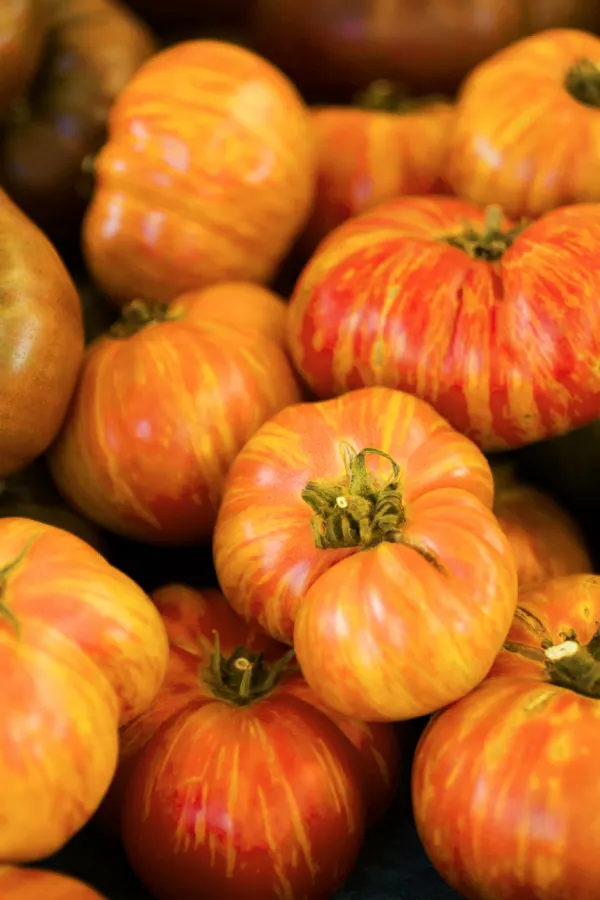
Fertilize plants with a half dose every two weeks for best results. This provides plants with a low and steady stream of nutrients instead of one big batch all at once.
Pruning & Picking
To help keep Big Rainbow tomato plants healthy, prune up the bottom 12 to 18 inches of the plant. This helps to increase airflow as well as keeps the lower stems off of the soil. You can also remove suckers if you want to keep the plant tidy and keep it from becoming overgrown.
Big Rainbow tomatoes are a late-season producer. But once they start producing, you should be able to harvest a steady supply of large 1 to 2-pound fruit regularly.
The tomatoes are ready for harvesting once they have a slight give to the flesh and are a vibrant yellow/orange color. The green shoulders should start to recede as the fruit ripens.
Here is to planting and growing Big Rainbow tomatoes this year and enjoying their beauty as well as sweet flavor all growing season long!
I Grow Tomatoes
Follow Our Facebook Page For Even More Great Tomato Growing Tips! I Grow Tomatoes Facebook Page
I Grow Tomatoes is a website created for those who love all things about tomatoes – from planting and growing – to cooking and canning! We publish two articles every week, 52 weeks a year. Sign up today to follow via email! This article may contain affiliate links.
